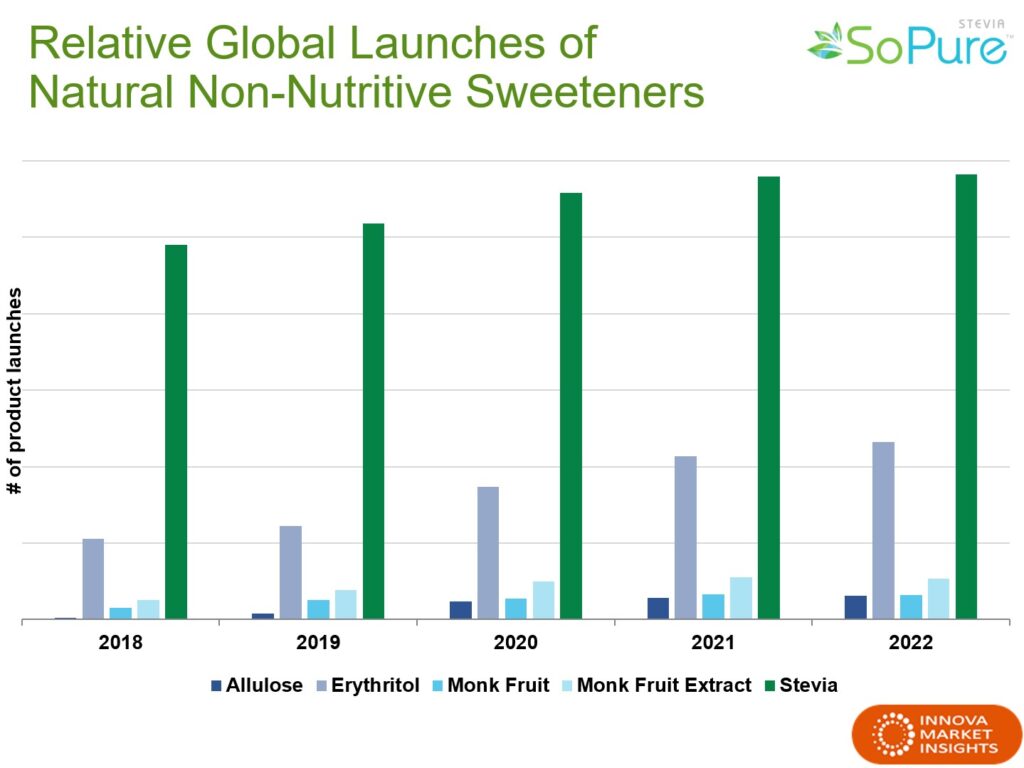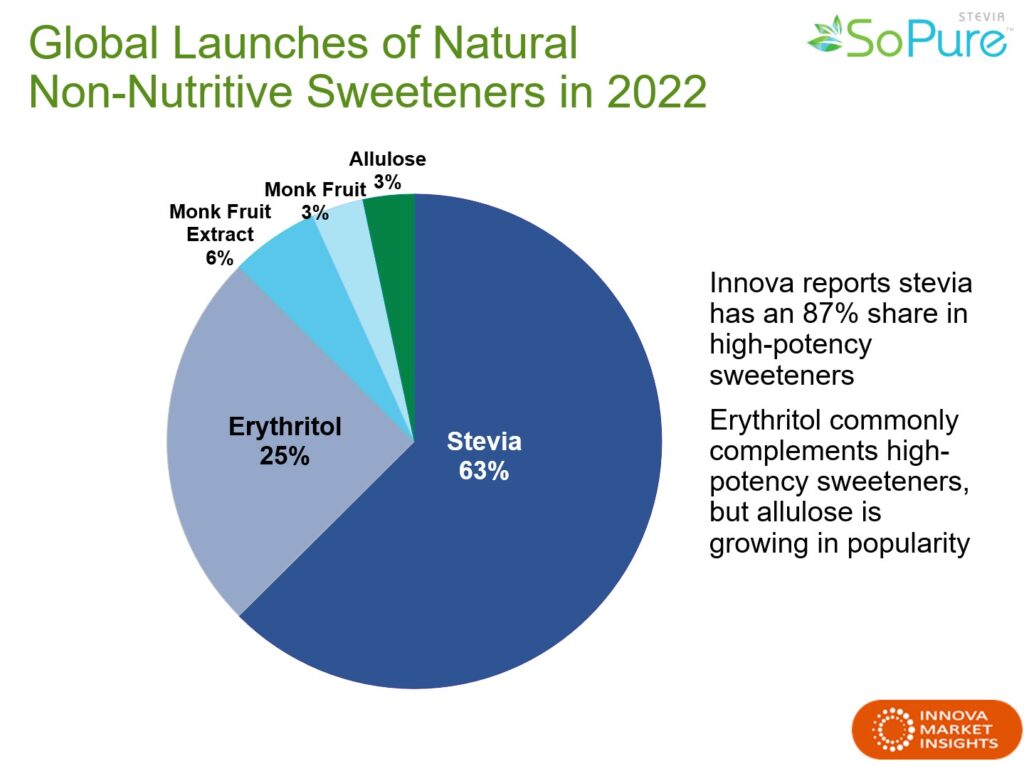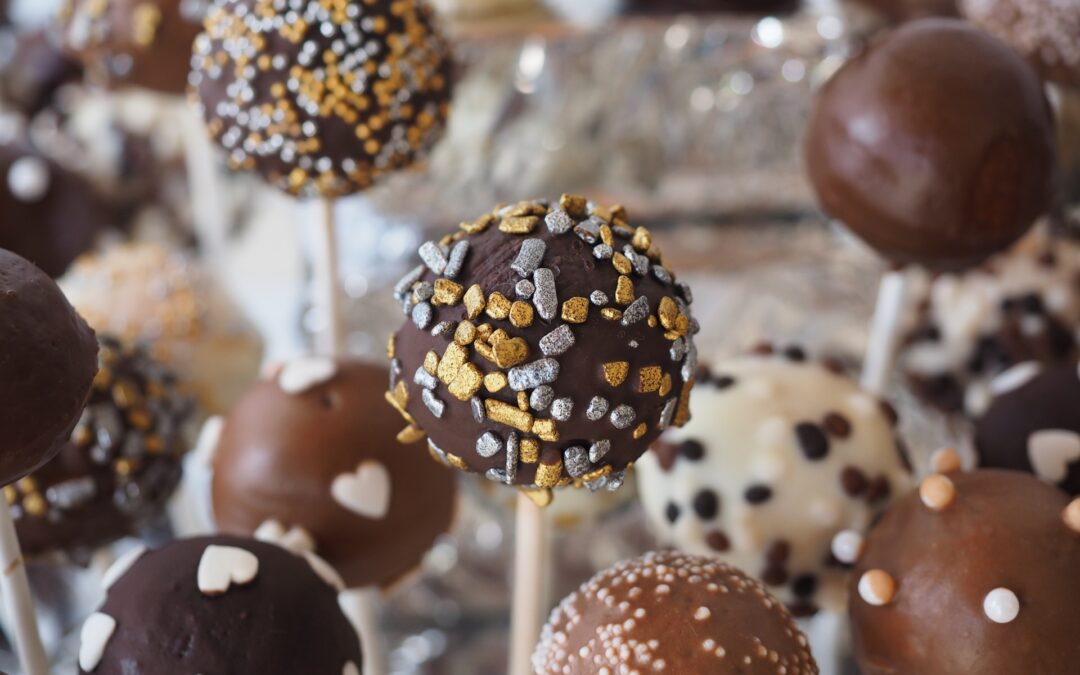The “cake pop” started out as a sweet alternative to cutting cake by the slice, in Angie Dudley’s home kitchen in Atlanta, Georgia. However, these trendy lollipop cakes smothered in icing are now staples in almost every bakery and Starbucks worldwide. Which begs the question… “Wouldn’t it be great if we could reduce sugar without sacrificing their tasty flavor?”
Since 2015, the cake pop industry has seen a meteoric rise, gaining so much momentum that it’s fueled countless businesses, food trucks, and even national cake pop conferences. According to Data Bridge Market Research, the cake pops market is projected to reach a market value of USD $250 million by 2029.

The Rising Popularity of Cake Pops For Health Reasons
Due to the convenience of these cake bites and their naturally “healthier” portion size, Data Bridge Market Research projects the cake pop market to grow at a CAGR of nearly 3% during the next 6 years.
Market research firm Technavio attributes a great deal of cake pops’ popularity to the prominence and rise of in-store bakeries in 2018. These in-store bakeries offered a “one-stop-shop” experience, giving a platform to cake pops and more portable bakery products. Their market study shows that alongside cake pop’s surge in popularity is also a congruent rise in demand for “healthier snack variants.”
While cake pops may be a “healthier” alternative to a full slice of cake, portion control is just the beginning of creating a “better for you” product. Also critical is reducing their sugar content. In line with shifting preferences towards healthier sweets, there has been a strong and steady growth in the use of natural sweeteners like stevia, erythritol and monk fruit. Innova Market Insights reports that global product launches with such sweeteners have been on the rise for more than a decade.

Among these natural alternatives, stevia is by far the most popular with 63% of product launches using natural non-nutritive sweeteners in 2022.

There is a wide array of natural sweetener solutions on the market that can replace the onset sweetness of consumers’ beloved cake pops, but achieving the optimal formulations for these sweet confections can be rather nuanced.
Solving the Challenges of Sweetening Cake Pops
In our global markets, granular sugar can be replaced with our stevia and erythritol mix (Stevia:Erythritol 1x). This product is co-processed for uniformity so that the fine powdered stevia doesn’t separate from the large erythritol crystals during shipping or processing. The taste and binding properties are a perfect match to the sugar that it replaces.
But whether or not that first bite tastes just as delicious as the popular, sugary cake pop recipes, the challenge may lie in preconceived notions when creating a sugar-free alternative.
VP of Market Strategy, Tom Fuzer, recently addressed some consumers’ outdated perceptions of stevia:
“When Reb A was first introduced, the industry rushed to market with products that featured stevia but neglected to optimize for its taste profile. Formulations with high use of levels of Reb A, particularly the low purity grades, created bitterness, aftertaste and other off-notes that consumers now continue to associate with stevia. Since then, improvements in the taste of stevia have come a long way. In the past five years, minor glycosides such as Reb D and Reb M have been commercialized and taste much better than Reb A,” Fuzer said.
As a result, the natural sweeteners industry had to take a look at reformulating with these better-tasting glycosides, particularly in sugar-free formulas for baked goods.
In the U.S. market, our DGS sweetener series could also be used as 1:1 drop-in sugar replacements. In particular, our E100 and F100 blends are suitable for baking applications like cake pops.
DGS E100, which is a mixture of erythritol, allulose, stevia leaf extract, and natural flavor, works well in the inside cake portion as it’s more effective in binding the dough together. It’s important to note that the usage of binding agents helps hold all the ingredients in a formulation together so it is not too crumbly, playing a big role in contributing to the texture you know and expect in a baked good. When using E100 in the batter for cake pops, E100 will tend to be more firm compared to the “crumbly” baking applications with F100.
Our F100 baking product, which is a mixture of allulose, soluble fiber, stevia leaf extract, and natural flavor, is great for coating the cake with a delicious white chocolate coating. F100 has 31% fiber, adding a positive nutritional element as many US consumers lack sufficient fiber in their daily diets. It works best in baked food applications that benefit from having browning or spread, since it contains more allulose than E100.
“Allulose behaves similar to sugar in that it undergoes Maillard browning, which is the reaction of heat with sugar to produce a brown color and taste. Allulose however reacts faster than sugar so baking conditions may need to be modified to get the same color,” states HOWTIAN Technical Director, Hank Wang.
Luckily, both allulose and erythritol work exceedingly well with stevia. In fact, they combine to better replicate the sweetness intensity and timing of sugar’s taste profile — with stevia producing the greater intensity while allulose and erythritol offer the more immediate sweetness. Additionally, they both complement stevia well because they can act as bulking agents that make up for the missing volume from reducing or replacing sugar in cake pops.
Product Demo: Our Stevia Formulation for Cake Pops
To illustrate these sugar reduction techniques in action, HOWTIAN was able to replace all the added granular sugar in a traditional cake pop recipe with our stevia-based sugar replacers. Based on HOWTIAN’s demonstration and product sampling at industry events like Supply Side West, taste testers couldn’t tell there was any sugar reduction — and the results really showed as our cake pops were flying off the trays.
To experiment with your own cake pop formulation, you can start with our recommended formulas below.
Red Velvet Cake Pops

| Red Velvet Cake Pops (66% Reduced Sugar) | |
| White Chocolate Chips | 22.82 |
| DGS E100 Sugar Replacer or Stevia:Erythritol 1x | 13.45 |
| Whole Milk | 10.62 |
| Flour | 10.19 |
| Cream Cheese | 8.37 |
| Egg | 7.08 |
| Butter | 4.25 |
| DGS f100 Sugar Replacer or Stevia:Erythritol 1x | 11.32 |
| Coconut Oil | 2.75 |
| Yogurt | 2.12 |
| Corn Starch | 1.98 |
| Vegetable Oil | 1.93 |
| Vanilla Extract | 0.92 |
| Vinegar | 0.88 |
| Cocoa Powder | 0.76 |
| Salt | 0.21 |
| Red Food Coloring | 0.18 |
| Baking Soda | 0.17 |
| TOTAL | 100g |

Pumpkin Cheesecake Pops

| Pumpkin Cheesecake Pops (66% Reduced Sugar) | |
| White Chocolate Chips | 22.22 |
| Pumpkin | 17.16 |
| DGS F100 Sugar Replacer or Stevia:Erythritol 1x | 10.72 |
| Egg | 9.49 |
| Cream Cheese | 9.25 |
| Flour | 7.69 |
| DGS E100 Sugar Replacer or Stevia:Erythritol 1x | 6.41 |
| Whole Milk | 3.84 |
| Vegetable Oil | 3.49 |
| Graham Crackers | 3.08 |
| Coconut Oil | 2.68 |
| Corn Starch | 1.74 |
| Yogurt | 0.92 |
| Baking Powder | 0.32 |
| Vanilla Extract | 0.26 |
| Cinnamon | 0.26 |
| Salt | 0.19 |
| Baking Soda | 0.15 |
| Turmeric | 0.08 |
| Nutmeg | 0.06 |
| TOTAL | 100g |

Contact Us
If you need help with reformulating for cake pops or baked good products and applications, HOWTIAN engineers are available to help meet your challenges. We can assist in developing a customized strategy for your product(s) with cost-effective solutions and reliable supply. Please contact us to learn more.

